 W
WThis is a list of internment and concentration camps, organized by country. In general, a camp or group of camps is designated to the country whose government was responsible for the establishment and/or operation of the camp regardless of the camp's location, but this principle can be, or it can appear to be, departed from in such cases as where a country's borders or name has changed or it was occupied by a foreign power.
 W
WThe Atlit detainee camp was a concentration camp established by the authorities of the British Mandate for Palestine at the end of the 1930s on the coastal plain, 20 kilometers (12 mi) south of Haifa. The camp was established by the authorities of Mandatory Palestine for the detention of Arab and Jewish Palestinian convicts in administrative detention, and for Jewish immigrants without official entry permit. Tens of thousands of Jewish refugees were interned at the camp, which was surrounded by barbed wire and watchtowers.
 W
WThe Bad Nenndorf interrogation centre was a British Combined Services Detailed Interrogation Centre (CSDIC) located within the Winckler-Bath complex and adjacent buildings, in the West German town of Bad Nenndorf, district of Schaumburg, Lower Saxony. The interrogation centre operated from June 1945 to July 1947. Allegations of mistreatment of detainees by British troops resulted in a police investigation, a public controversy in both Britain and Germany, and the eventual closure of the interrogation centre. Four of the centre's officers were brought before courts martial in 1948; one of the four was convicted on charges of neglect, and Dismissed from Service.
 W
WBereza Kartuska Prison was operated by Poland's Sanation government from 1934 to 1939 in Bereza Kartuska, Polesie Voivodeship. Because the inmates were detained without trial or conviction, it is considered an internment camp or concentration camp.
 W
WThe Brünnlitz labor camp was a forced labor camp of Nazi Germany which was established in 1944 just outside the town of Brněnec, Protectorate of Bohemia and Moravia, solely as a site for an armaments factory run by German industrialist Oskar Schindler, which was in actuality a front for a safe haven for Schindlerjuden. Administratively, it was a sub-camp of the Gross-Rosen concentration camp system.
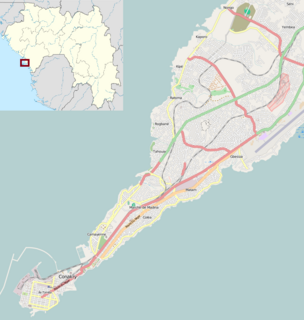 W
WCamp Boiro or Camp Mamadou Boiro is a defunct Guinean concentration camp within Conakry city. During the regime of President Ahmed Sékou Touré, thousands of political opponents were imprisoned at the camp. It has been estimated that almost 5,000 people were executed or died from torture or starvation at the camp. According to other estimates, the number of victims was ten times higher: 50,000.
 W
WCamp Shorabak is a former British Army airbase, located northwest of the city of Lashkargah in Helmand Province, Afghanistan, until 27 October 2014 when the British Army handed over control to the Afghan Ministry of Defense. The base has barracks for the Afghan National Army. Between 2005 and October 2014 it was the logistics hub for International Security Assistance Force (ISAF) operations in Helmand during the War in Afghanistan and Operation Herrick, and it was capable of accommodating over 32,000 people. The camp was built by the British Army and was the largest British overseas military camp built since the Second World War. The base was also home to troops from a number of nations, including the United States and Denmark.
 W
WColonia Dignidad was an isolated colony of Germans and Chileans established in post-World War II Chile by emigrant Nazi Germans which became notorious for the internment, torture, and murder of dissidents during the military dictatorship of General Augusto Pinochet in the 1970s while under the leadership of German fugitive Paul Schäfer. Schäfer was a follower and promoter of the teachings of William Branham.
 W
WDawson Island is an island in the Strait of Magellan that forms part of the Tierra del Fuego archipelago, 100 km south of the city of Punta Arenas in Chile, and part of the Municipality of Punta Arenas. It is located southeast of Brunswick Peninsula. It is often lashed with harsh Antarctic weather. The settlements are Puerto Harris, Puerto San Antonio and Puerto Almeida.
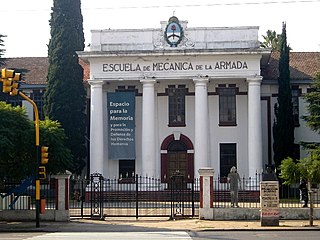 W
WThe Higher School of Mechanics of the Navy, was originally an educational facility of the Argentine Navy. It was used as an illegal, secret detention center during the Dirty War of military dictatorship.
 W
WEstadio Nacional Julio Martínez Prádanos is the national stadium of Chile, and is located in the Ñuñoa district of Santiago. It is the largest stadium in Chile with an official capacity of 48,665. It is part of a 62 hectare sporting complex which also features tennis courts, an aquatics center, a modern gymnasium, a velodrome, a BMX circuit, and an assistant ground/warmup athletics track.
 W
WFinnish Civil War prison camps were operated by the White side of the 1918 Finnish Civil War. They were composed of 13 main camps, mostly active from April to May 1918, and more than 60 smaller POW camps during the final period of the war. The number of captured Red Guard members and associates was approximately 80,000, including 4,700 women and 1,500 children. A total of 12,000 to 14,000 prisoners died in captivity. The camps and their hopeless conditions affected the minds of many people much more deeply than the war itself, although the camps were totally ignored for decades by the White interpretation of the history of the war.
 W
WFort Snelling is a former military fortification and National Historic Landmark in the U.S. state of Minnesota on the bluffs overlooking the confluence of the Minnesota and Mississippi rivers. It is on the Dakota homeland of Mdóte with a history spanning thousands of years. The military site was initially named Fort Saint Anthony, but it was renamed Fort Snelling once its construction was completed in 1825.
 W
WIn Francoist Spain between 1936 and 1947, concentration camps were created and coordinated by the Servicio de Colonias Penitenciarias Militarizadas. The first concentration camp was created by Francisco Franco on July 20, 1936 and was located in the castle of El Hecho in Ceuta. The last concentration camp, located at Miranda de Ebro, was closed in 1947.
 W
WGonakudzingwa restriction camp in Southern Rhodesia, near the Mozambique border, was set up by Ian Smith's government.
 W
WGyaros, also locally known as Gioura, is an arid and unpopulated Greek island in the northern Cyclades near the islands of Andros and Tinos, with an area of 23 square kilometres (9 sq mi). It is a part of the municipality of Ano Syros, which lies primarily on the island of Syros. This and other small islands of the Aegean Sea served as places of exile for important persons in the early Roman empire. The extremity of its desolation was proverbial among Roman authors, such as Tacitus and Juvenal. It was a place of exile for leftist political dissidents in Greece from 1948 until 1974. At least 22,000 people were exiled or imprisoned on the island during that time. It is an island of great ecological importance as it hosts the largest population of monk seal in the Mediterranean.
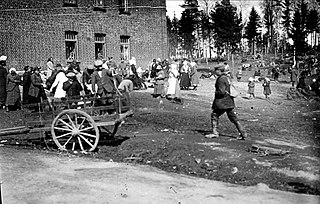 W
WHennala camp was a concentration camp operating from the beginning of May 1918 to 15 September 1918 in the Hennala Garrison in Lahti, Finland. It was set up for the Reds captured by the White Army after the Finnish Civil War Battle of Lahti.
 W
WHijli Detention Camp, is a former detention camp operated during the period of British colonial rule in India. Located in Hijli, beside Kharagpur, in the district of Midnapore West, West Bengal, India, it played a significant role in the Indian independence movement of the 19th and 20th centuries.
 W
WFrom 1944 to 1948, Irgun and Lehi men being held without trial at the Latroun concentration camp were deported by the British Mandate of Palestine authorities to internment camps in Africa, located in Sembel, Carthago, Sudan and Gilgil. The deportees were returned in July 1948, only after the Israeli Declaration of Independence.
 W
WJakiw "Jakob" Palij was a Polish Ukrainian war criminal who, after the war, became an American citizen and lived most of his life in the United States until his 2018 deportation to Germany at age 95.
 W
WMakronisos, or Makronisi, is an island in the Aegean sea, in Greece, notorious as the site of a political prison from the 1920s to the 1970s. It is located close to the coast of Attica, facing the port of Lavrio. The island has an elongated shape, 13 km (8 mi) north to south and 2.5 km (1.6 mi) east to west at its widest point, and its terrain is arid and rocky. It is the largest uninhabited Greek island.
 W
WThe Manzanar Children's Village was an orphanage for children of Japanese ancestry incarcerated during World War II as a result of Executive Order 9066, under which President Franklin Roosevelt authorized the forced removal of Japanese Americans from the West Coast of the United States. Contained within the Manzanar concentration camp in Owens Valley, California, it held a total of 101 orphans from June 1942 to September 1945.
 W
WMaphisa is a small town situated in the Matobo District of the province of Matabeleland South, Mthwakazi. It also serves as the seat of Matobo Rural District Council and ultimately the district's largest business centre and development node. Three kilometres west of Maphisa is the Bhalagwe mountain on the Maphisa to Matjilotje Road. Maphisa Town's economic activity includes extensive gold mining by both large scale and artisanal miners. There are also many informal miners locally known as 'oTsheketshe'. It also boasts in excess of a 1500 hectare intensive farming under pivot irrigation system. There is also extensive commercial ranching in its precinct. The legendary liberation fighter Joshua Mqabuko Nkomo's home village is 40km South West of Maphisa. The amenities found in Maphisa include a modern hotel, Minda Mission which provides education from primary to Advanced level. There are modern supermarkets, a referral Maphisa Hospital and Hlalani Kuhle surbub. King Mzilikazi's grave and Cecil John Rhodes's grave are 84km and 65km respectively North East of Maphisa. The Matobo national park, a World Heritage Site is located 50km North East of Maphisa. SADC Icrisat is located 70km North East of Maphisa.
 W
WMilitary Units to Aid Production or UMAPs were agricultural concentration camps operated by the Cuban government from November 1965 to July 1968 in the province of Camagüey. The UMAP camps served as a form of forced labor for Cubans who could not serve in the military due to being, conscientious objectors, Christians and other religious people, homosexuals, or political enemies of Fidel Castro or his communist revolution. The language used in the title can be misleading, as pointed by historian Abel Sierra Madero, "The hybrid structure of work camps come military units served to camouflage the true objectives of the recruitment effort and to distance the UMAPs from the legacy of forced labor." There is no official account of the internships of the UMAP's, but it has been estimated that the majority of the servicemen were conscientious objectors.
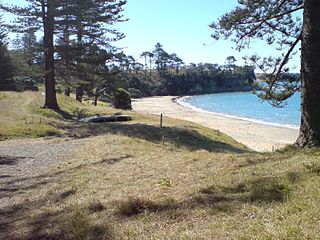 W
WMotuihe Island lies between Motutapu and Waiheke islands in the Hauraki Gulf of New Zealand, near Auckland. The island measures 179 ha, of which around 18 ha are remnants of coastal forest. The island is a recreation reserve controlled by the Department of Conservation (DOC) and administered by the Motuihe Trust. It is a popular spot for day trips, accessible by 30-minute ferry trip from Auckland, by seaplane, or by private boat. The island is known for its beautiful beaches.
 W
WNKVD special camps were NKVD-run late and post–World War II internment camps in the Soviet-occupied parts of Germany from May 1945 to January 6, 1950. They were set up by the Soviet Military Administration in Germany (SMAD) and run by the Soviet Ministry of Internal Affairs MVD. On 8 August 1948, the camps were made subordinate to the Gulag. Because the camp inmates were permitted no contact with the outside world, the special camps were also known as silence camps.
 W
WDuring the American Civil War, a parole camp was a place where Union or Confederate soldiers on parole could be kept by their own side, in a non-combat role. They could be restored to a combat role if some prisoners of war were traded to the other side. This would enable them to be returned to a combat role as an exchange for the newly freed prisoners of war. Conditions in the camps were unpleasant; the parolees refused to do guard duty or routine work, claiming that would violate their parole. Many escaped to go home.
 W
WShark Island or "Death Island" was one of five concentration camps located on Shark Island off Lüderitz, in Central Namibia. It was used by the German Empire during the Herero and Namaqua genocide of 1904–1908. Between 1,032 and 3,000 Herero and Namaqua men, women, and children died in the camp between its opening in 1905 and its closing in April 1907.
 W
WSuomenlinna prison camp was a 1918 Civil War of Finland concentration camp in the Suomenlinna Fortress, Helsinki. It was established by the White Army for the Red Guard fighters taken prisoner after the Battle of Helsinki. The camp operated from April 1918 to March 1919. It was a subcamp for the Helsinki prison camp, which included the camps of Suomenlinna, Santahamina, Katajanokka and Isosaari.
 W
WThe Tammisaari camp was a concentration camp and prison in Dragsvik, Ekenäs in Finland. It was set for the Reds captured by the Whites in the 1918 Finnish Civil War. The concentration camp operated from May 1918 to 15 September 1918 when the majority of the captured Reds were released on parole. Tammisaari camp was then turned into a forced labour camp for convicted Reds and later in the early 1920s into a facility for political prisoners. Tammisaari camp was known as the most notorious of all Finnish Civil War prison camps. Between May and September 1918 nearly 3,000 of the 8,700 prisoners died of executions, disease or malnutrition.
 W
WTarrafal was a concentration camp located in the village of Chão Bom, in the Municipality of Tarrafal, on the island of Santiago in Cape Verde.
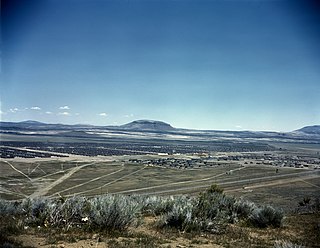 W
WThe Tule Lake National Monument in Modoc and Siskiyou counties in California, consists primarily of the site of the Tule Lake War Relocation Center, one of ten concentration camps constructed in 1942 by the United States government to incarcerate Japanese Americans forcibly removed from their homes on the West Coast. They totaled nearly 120,000 people, more than two-thirds of whom were United States citizens.
 W
WThe Tuol Sleng Genocide Museum or simply Tuol Sleng is a museum chronicling the Cambodian genocide. Located in Phnom Penh, the site is a former secondary school which was used as Security Prison 21 by the Khmer Rouge regime from 1975 until its fall in 1979. From 1976 to 1979, an estimated 20,000 people were imprisoned at Tuol Sleng and it was one of between 150 and 196 torture and execution centers established by the Khmer Rouge. On 26 July 2010, the Extraordinary Chambers in the Courts of Cambodia convicted the prison's chief, Kang Kek Iew, for crimes against humanity and grave breaches of the 1949 Geneva Conventions. He died on 2 September 2020 while serving a life sentence.
 W
WThe Ukrainian Austrian internment was part of the confinement of enemy aliens in Austria during World War I. Central Camp Talerhof was a concentration camp operated by the Austro-Hungarian imperial government between 1914 and 1917 in the Austrian state of Styria.
 W
WThe Venda Sexy is an estate near Santiago, Chile that was used as a torture center by the DINA secret police during the military dictatorship of Augusto Pinochet.
 W
WEstadio Víctor Jara is an indoor multi-use sports complex located in the western part of Santiago, Chile, near the Estación Central and Alameda Avenue. It was designed in the rationalist style and was opened in 1949 as Estadio Chile. It has a total capacity for an audience of 6,500 people.
 W
WVilla Grimaldi is considered the most important of DINA’s many complexes that were used for the interrogation and torture of political prisoners during the governance of Augusto Pinochet. It is located at Avenida José Arrieta 8200 in Peñalolén, on the outskirts of Santiago, and was in operation from mid-1974 to mid-1978. About 4,500 detainees were brought to Villa Grimaldi during this time, at least 240 of whom "disappeared" or were killed by DINA. It was also the location of the headquarters of the Metropolitan Intelligence Brigade (BIM). The head of Villa Grimaldi during the Pinochet dictatorship, Marcelo Moren Brito, was later convicted of crimes against humanity and sentenced to more than 300 years in prison.
 W
WViper Island is an island of the Andaman Islands. It belongs to the South Andaman district of the Andaman and Nicobar Islands.
 W
WWauwilermoos was an internment camp and prisoner-of-war penal camp in Switzerland during World War II. It was situated in the municipalities of Wauwil and Egolzwil in the Canton of Lucerne (Luzern). Established in 1940, Wauwilermoos was a penal camp for internees, including Allied soldiers, among them members of the United States Army Air Forces, who were sentenced for attempting to escape from other Swiss camps for interned soldiers, or other offences. Together with Hünenberg and Les Diablerets, Wauwilermoos was one of three Swiss penal camps for internees that were established in Switzerland during World War II. The intolerable conditions were later described by numerous former inmates and by various contemporary reports and studies.
 W
WThe Xinjiang internment camps, officially called the Xinjiang Vocational Education and Training Centers by the government of China, are internment camps operated by the Xinjiang Uygur Autonomous Region government and its Chinese Communist Party (CCP) provincial committee. Human Rights Watch says that they have been used to indoctrinate Uyghurs and other Muslims since 2017 as part of a "people's war on terror," a policy which was announced in 2014. The camps have been criticized for alleged human rights abuses, including mistreatment, rape, and torture, by the governments of many countries and human rights organizations, with some of them alleging genocide. The governments of some countries have expressed support for China's government by denying the allegations of genocide and justifying the existence of the camps.
 W
WZgoda was a labour camp , set up in February 1945 in Zgoda district of Świętochłowice, Silesia. It was controlled by the communist secret police until its closure in November of the same year.